over 3 years
ago -
PDXMidgeman
-
Direct link
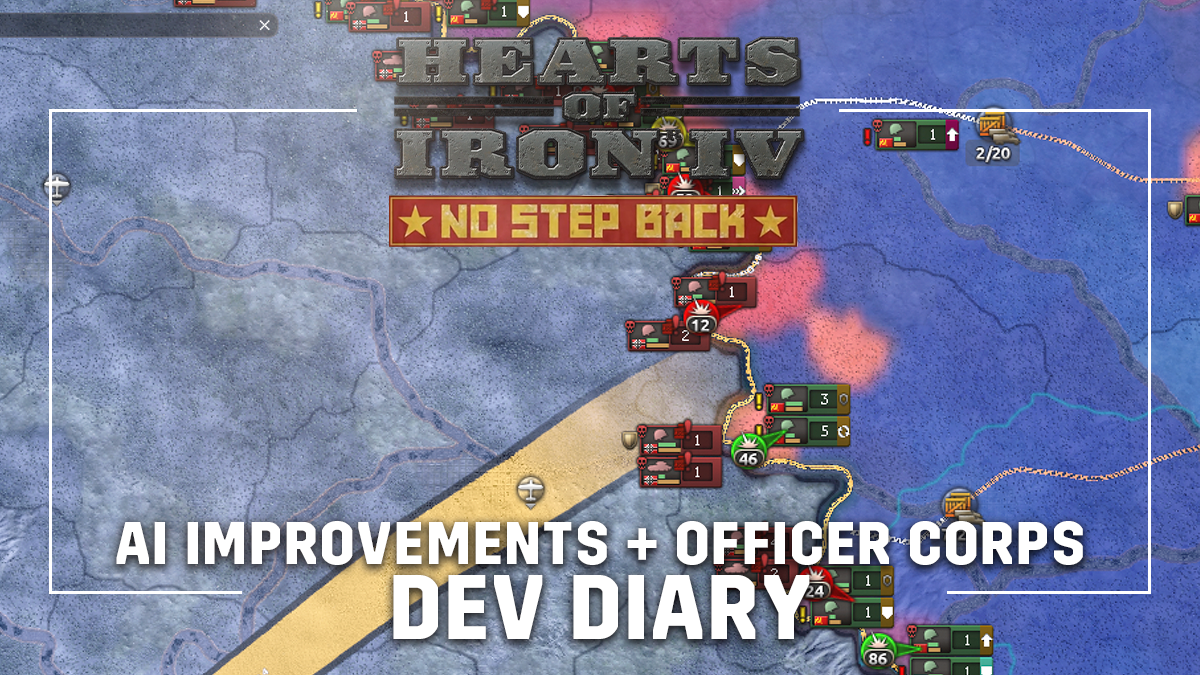
Hi all, and welcome back to today’s developer diary!
It can be very easy to get super-focused on details when looking at individual systems or parts of features - something we often tend to do when writing developer diaries. Each week, we’re going to give you an overview of a core system that we’ve so far introduced in parts, and will include all of the changes we’ve made to that system over the course of development, since we first looked at it.
In addition to this, we’ll also take a look at some changes coming to the AI in No Step Back, so if that’s more your jam, feel free to skip to the end ;D
We’ll begin with an overview of the Officer Corps:
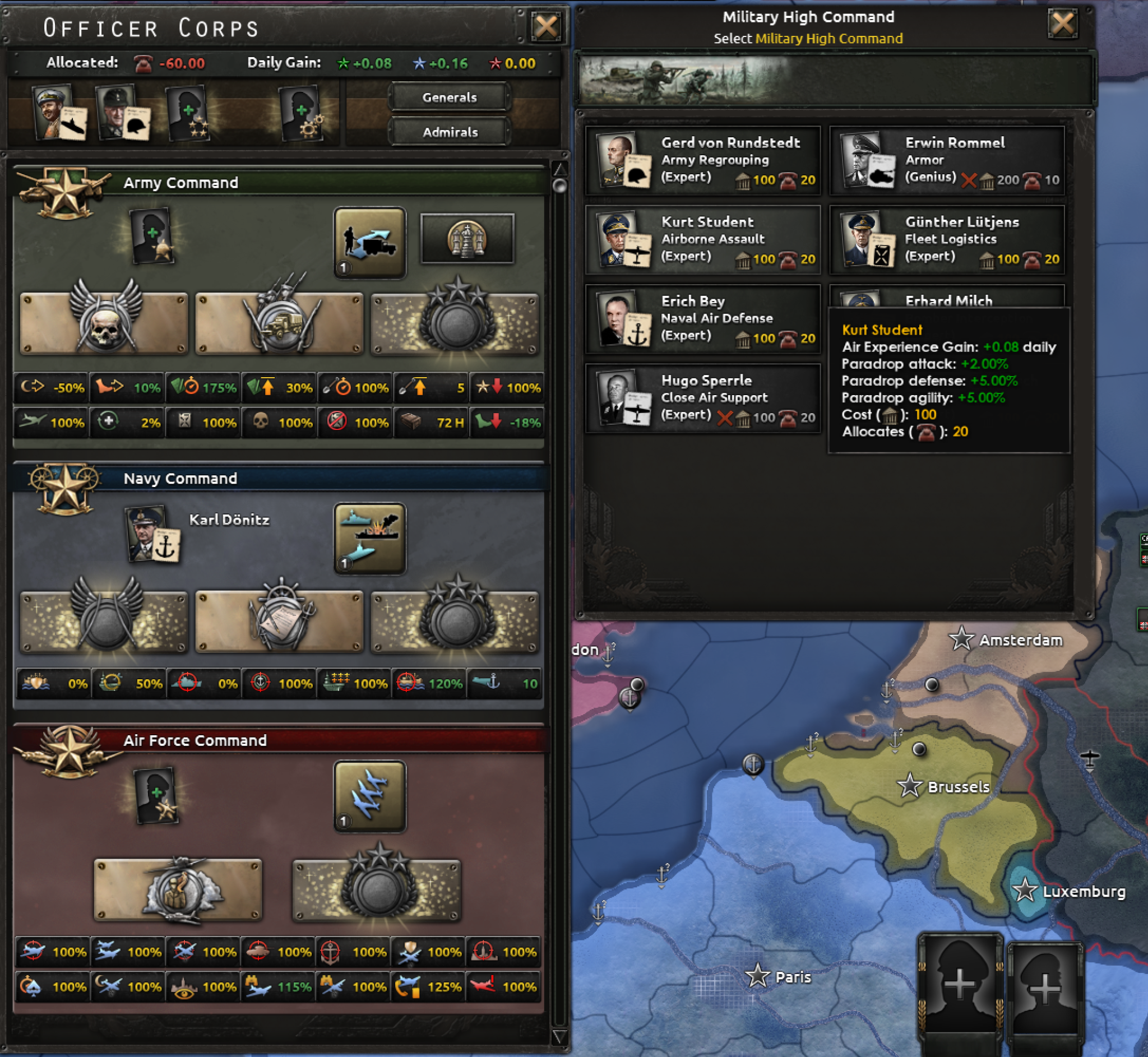
This image represents a near-final take on what the office corps screen will look like.
As you can see, the branch chiefs, theorist, and military high command have found their way to the officer corps screen, though for ease of access you may still view and appoint them in the country overview screen like before. This kind of change is the sort of thing that comes up during playtesting - while it made sense to collect similar things together, there was no good reason to change the player’s flow expectations.
The manner in which you’ll appoint advisors has changed a bit. We decided during the officer corps development process, to make a bigger deal out of the advisor ‘level’ (specialist, expert, genius) that all non-theorist advisors possess. In addition to adding a flat command power allocation (reduction of max command power) which is reduced by high advisor ranks, political power costs are raised by having a higher rank advisor.
Branch advisors now grant daily experience gain, meaning stacking your command cadre well is vitally important to the pre-war development of your military. To add to the choices, doctrines now cost experience rather than being something you spend a research line on:
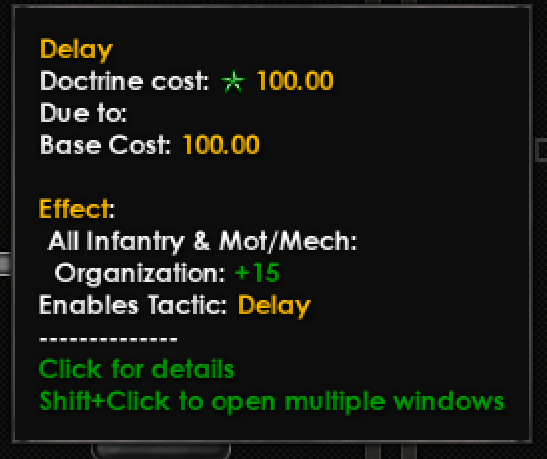
For owners of No Step Back, military branches also possess several specialization options in the form of Military Spirits, which are also unlocked with experience:
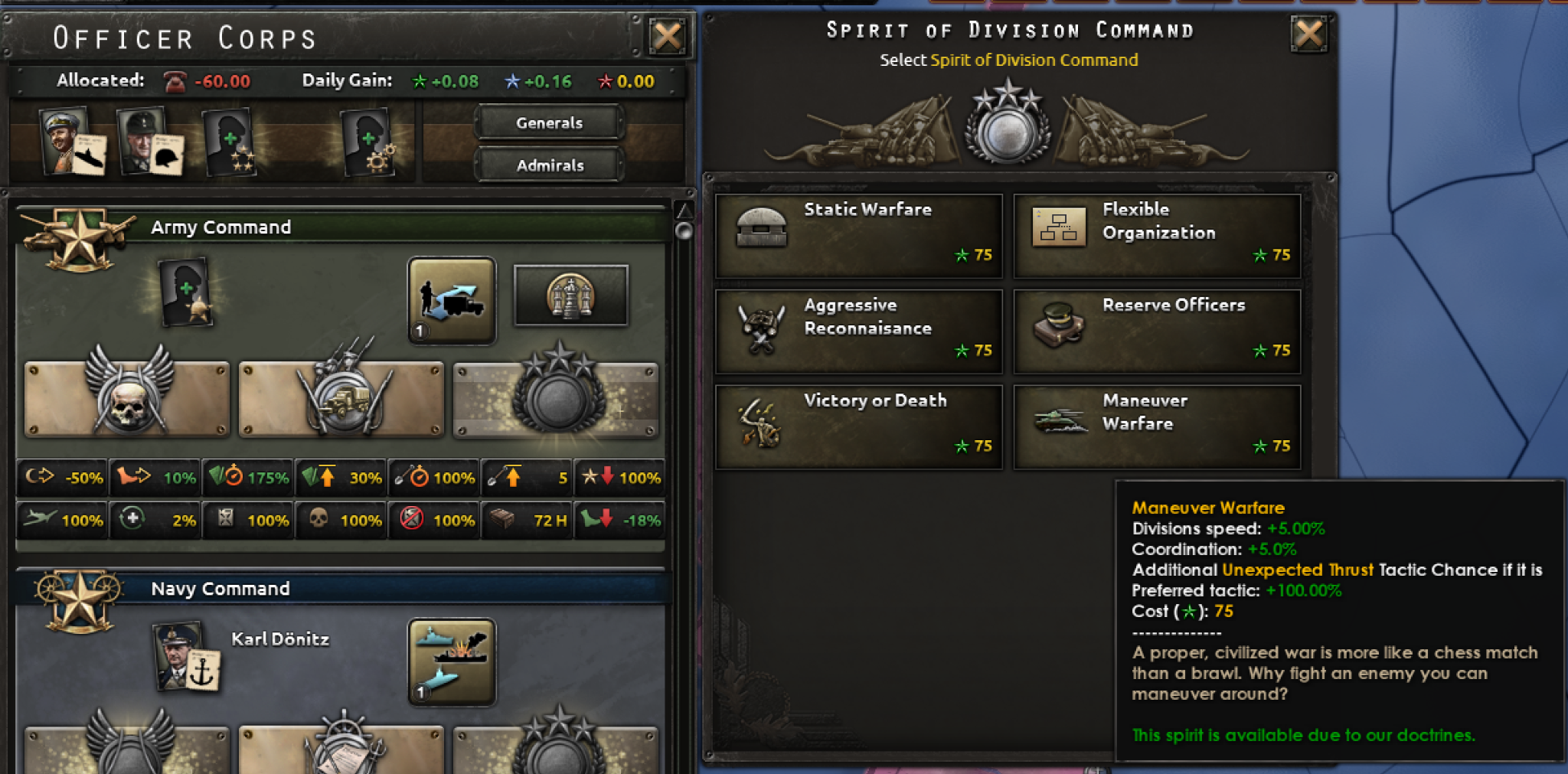
We found during development that less was more when it came to creating a tightly balanced set of choices, and we’ve limited the number of options in each category to around six, with each category being strongly themed around Academy, Military Service, and Command.
To add slightly more nuance to choices here, we ensured that several options in each category would be made available based on situational factors - ideology, doctrine branch, and in rare cases, country choice, can all make new choices available.
The most important part of cultivating a strong officer corps, is the ability to give your trusted commanders advisory roles. Commander traits earned in active combat can make your characters eligible for specific advisory roles:
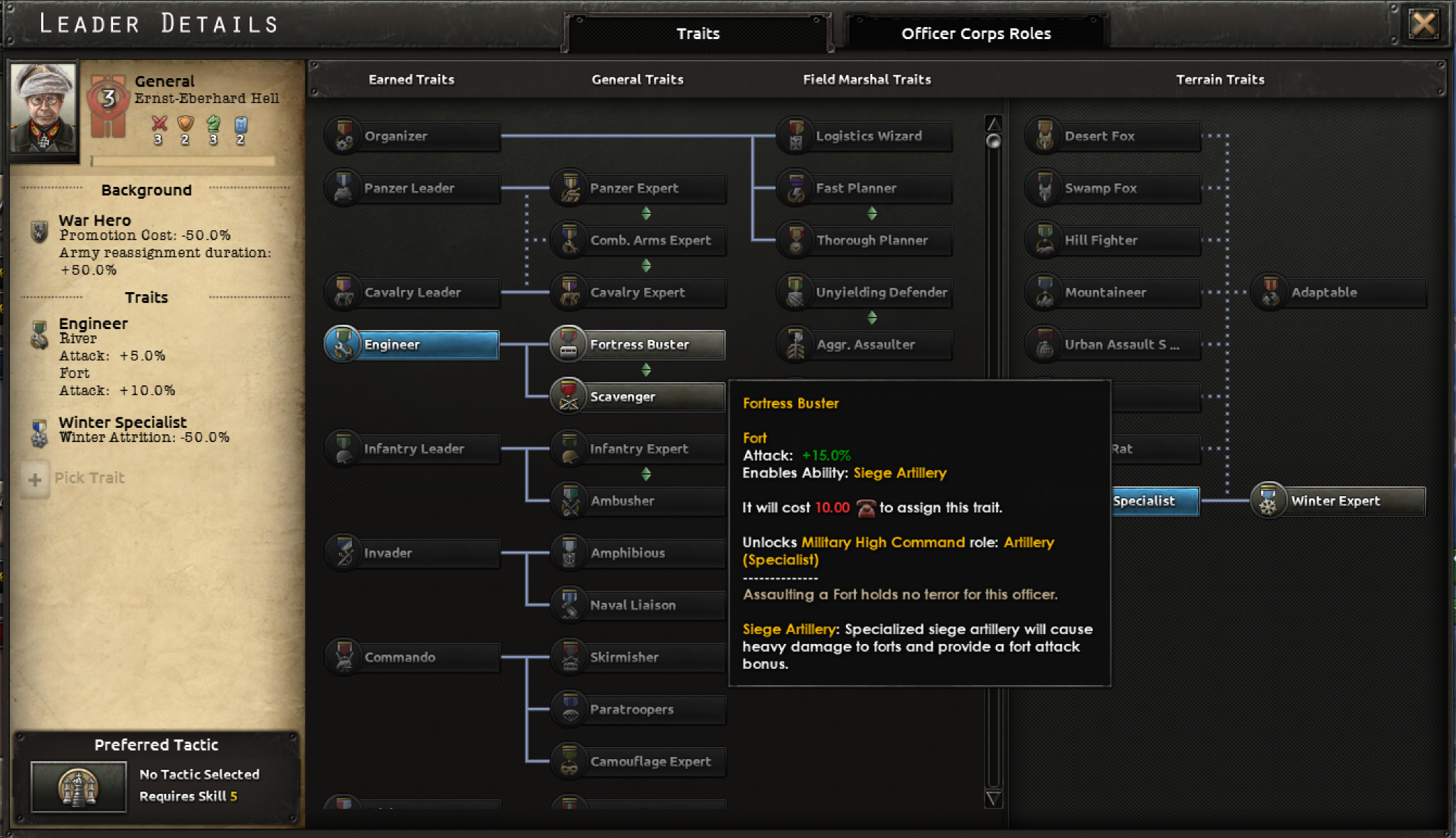
Characters promoted to advisory duties this way will continue to advance their advisory rank as their commander level increases - a highly experienced field commander will grow from specialist to genius over the course of their career.
Lastly, we are introducing the preferred tactics weighting system. This allows you to set a national, field marshal, and commander-level preferred tactic, which will weight the chances of picking said tactic in a combat situation. While the national preferred tactic can be switched out for a cost, selecting a preferred tactic for your commanders and field marshals is something that remains a permanent choice, representing their adherence to a particular doctrinal theory.
Of course, a host of minor changes accompany the officer corps, including new alerts, better resource tooltips, and adding some of this information into intel ledgers for opponent countries.
The AI
And now, on to a topic that is sure not to evoke strong opinions from anybody here: the AI.
During the development of La Resistance, work was begun on adding additional tools through an imgui that allow modders and users to see various internal data. In NSB, a significant amount of time was spent adding to this tooling and providing support for future AI development, as well as laying the groundwork for easier iteration on AI behaviour and more.
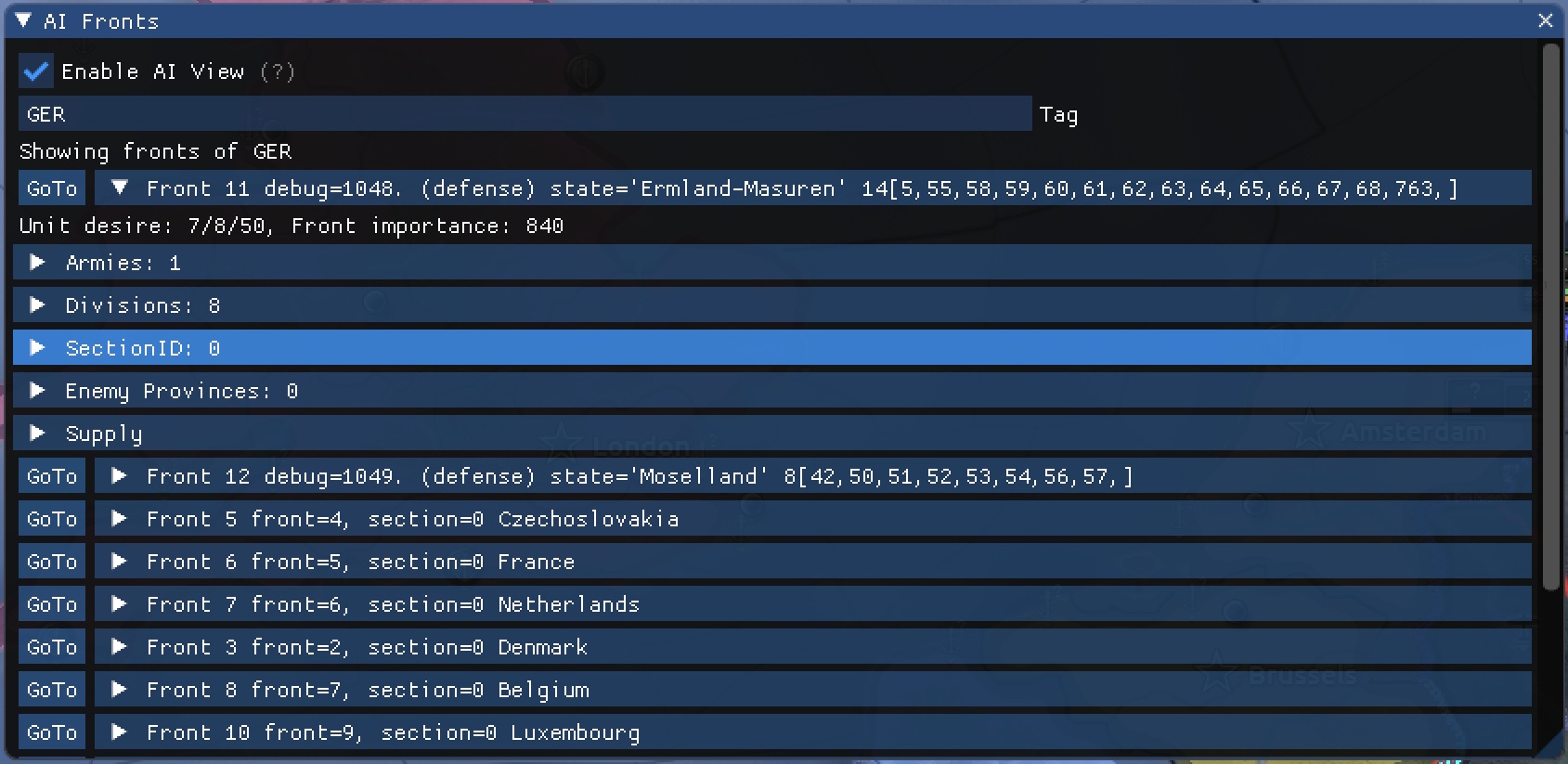
One of our new in-game tools for assessing AI font priorities. These tools will be available for modders, who can continue to fine-tune AI for their own needs through the use of strategies and defines. Here, you can see that the AI has evaluated the topmost defense order as desiring a minimum of 7 divisions, an 'ideal' count of 8, and a maximum count of 50. Defense orders tend to fluctuate quite heavily in 'ideal' unit counts: they tend to be quite elastic to make up for units not needed elsewhere.
While much of the work done here was investment for the future, we’ve also made some pretty big changes to the way the AI evaluates where it commits its troops and more.
While it can be hard to indicate objective improvements in terms of AI, there are several key areas we aimed to improve for this release:
Use of specialized divisions - the AI for assigning armor and special forces to appropriate fronts has received some improvement. The practical upshot of this means you ought to see fewer armor divisions assigned to inappropriate orders (garrisons, pure defensive lines etc), and mountaineers used in frontlines that have the right terrain types.
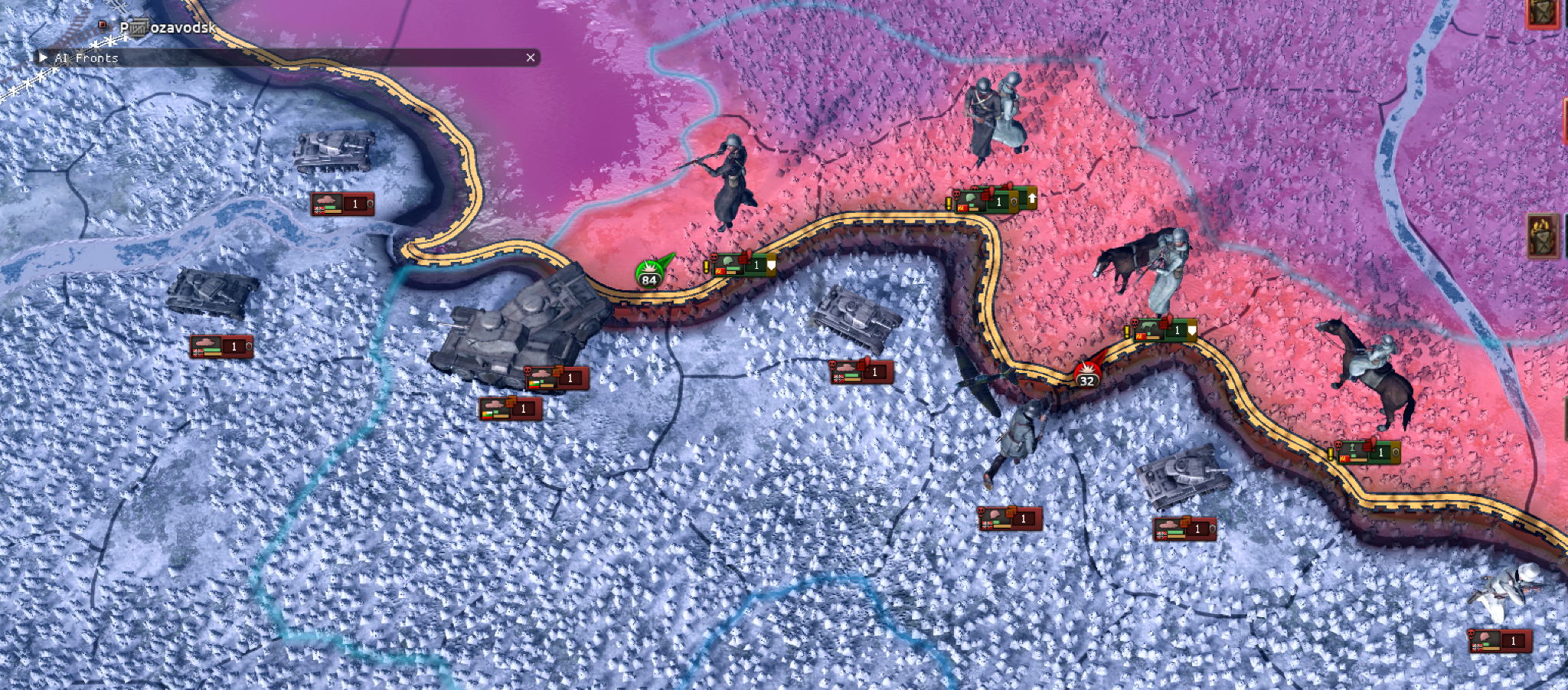
Did I mention the AI likes tanks?
Unit weight distribution - combined with the new supply system, the AI evaluation of where to put units has been totally overhauled. In practical terms, this is likely to manifest as seeing the AI commit more troops to defend key areas (ports & coasts), care more about the active supply situation on frontlines, and provide something slightly resembling a defense in depth for their own core territory, even during active frontline pushes elsewhere.
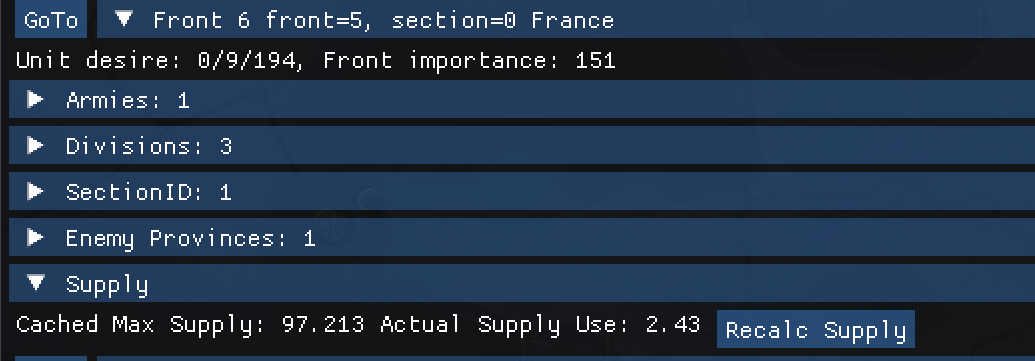
You can see that the AI considers supply carefully when assessing front unit distribution. There are certain circumstances in which the logical supply capacity of a front can be exceeded by the AI - notably when a defensive frontline is facing a numerically superior foe, or when the AI determines that it needs to win a war fast.
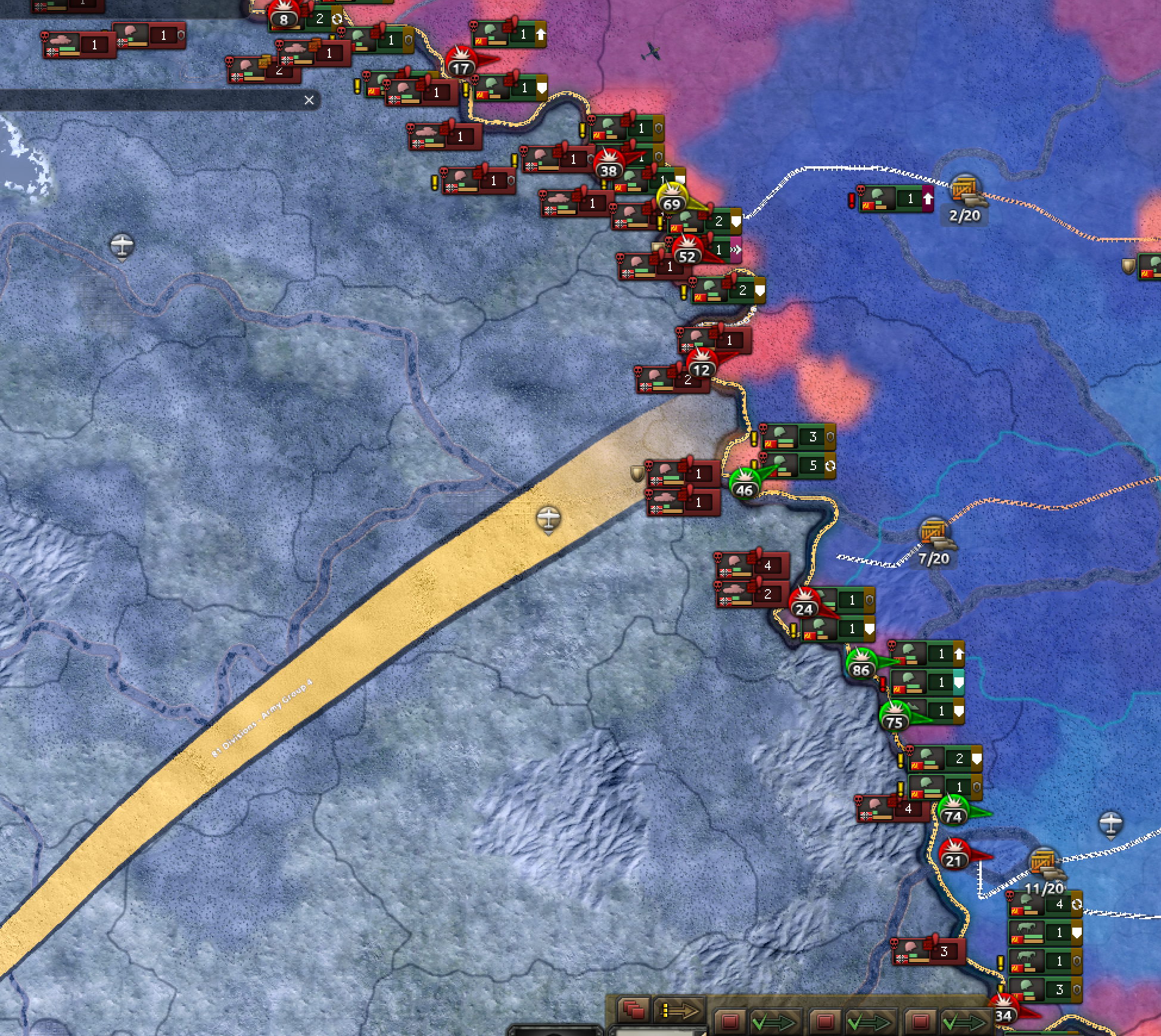
Once Moscow has fallen, the supply situation can get pretty dire as you push east.
Naval Invasions - logic for AI naval invasions has seen significant improvement. You should be encountering larger, less frequent naval invasions overall. The Ai will try to take advantage of weak points in coastal defences, and generally be more keen to invade to support theaters. This got so scary we had to turn the new capabilities down several times (of course, these can be tuned back up).
Counters - while it can be difficult to determine a ‘right’ time to switch templates or create a specialized template, we’ve improved logic for majors utilizing specialized divisions such as Tank Destroyers in relevant circumstances. You should see the AI care a little more about what you throw at it.
Buffer Fronts - Several AI strategies now involve the use of buffer fronts. These are specially defined area defense orders which will request a proportion of national divisions to man them. Where these differ from regular garrison orders, is that these fronts will ‘loan’ their unit distribution counts to nearby fronts or invasion orders.
For example, the heatmap below show the distribution of US troops several months prior to Overlord. The troops stationed in Alexandria and the UK are using buffer fronts, which will supply frontlines in europe, in order to avoid having to relocate troops from much further away. Here you can see the (somewhat anachronistic) defense of Greek territory being supplied by the buffer front in Alexandria, which is in turn supplied with divisions from the US mainland (arriving through the Mediterranean).
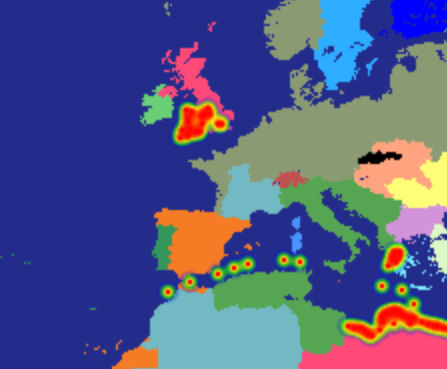
The locations and weightings of these are instructional only.
{LINK REMOVED} Read the full Diary